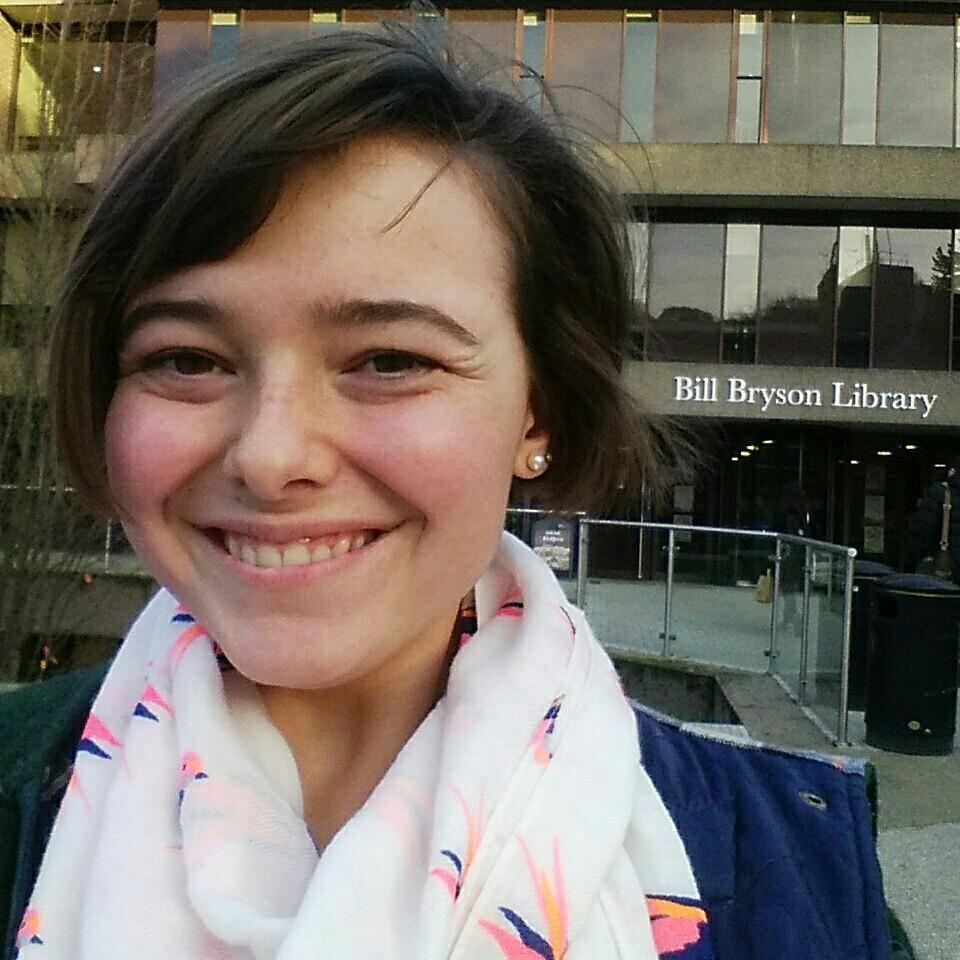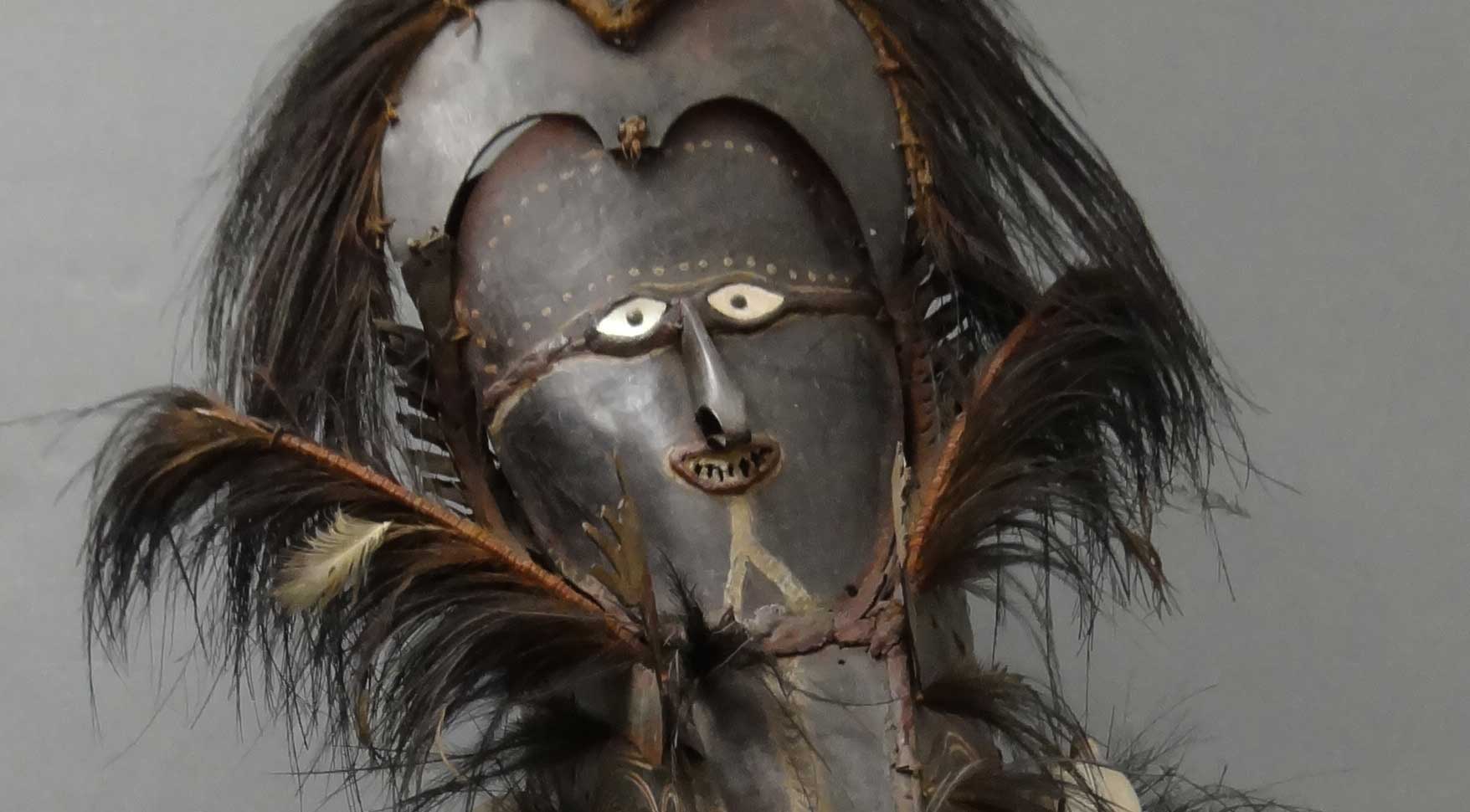Rhian Ward, a Conservation Student at Durham University, answers questions on her placement with the University of Cambridge Museums.
What are you studying and how did you get to work with the University of Cambridge Museums?
I am a final year student on the MA Conservation of Archaeological and Museum Objects at Durham University, and as part of this we do a placement for 9 months. Our course covers a wide range of materials, and I wanted a placement to reflect this – the University of Cambridge Museums has delivered and then some; I have worked on fossils, plaster casts, shark tooth swords, plastics and many more! I mainly work at the Museum of Archaeology & Anthropology on their collections, but I have one day a week at the Museum of Classical Archaeology condition assessing and cataloguing their wonderful casts, and I have had two stints working at the fabulous Sedgwick Museum.
Is it something you’ve always wanted to do?
Before I started my undergraduate degree in archaeology, I hadn’t even heard of conservation in a museum context. But after some lectures and further digging (pardon the archaeology pun) I realised that conservation focused on the aspect of archaeology I loved – the objects and what they can tell us about how people lived and used the materials they had available. My masters course then introduced me to working with anthropological and more modern museum objects and I fully intend to carry on working with museums after I graduate.
What are you working on at the moment?
Currently sitting on my desk is a tortoiseshell mask in the form of a crocodile from the Torres Straits. I have previously applied a methylcellulose consolidating spray to try and stop the plant fibre ‘beard’ from shedding, as well as cleaning the many feathers that decorate the mask. The final job is to remove some nylon fishing wire holding the object together and replace it with custom made colour matched Japanese tissue string, which is much gentler to the object and blends in better.
Tell us about a typical day – what does your job involve?
In the life of a conservator, there is no typical day! A lot of our work depends on what is happening elsewhere in the museum – on Mondays at the Museum of Archaeology & Anthropology (MAA) when the museum is closed to the public, we take the opportunity to clean objects on open display or move large objects through the galleries without getting in people’s way. When the galleries are open to the public, we might be called down to investigate pest sightings by the gallery attendants. If there is a new exhibition in the museum or loan of objects to another institution coming up, we can be found checking and treating objects to make sure they are strong enough to go on display and travel. There are also ongoing conservation jobs that aren’t linked to displays or loans, which we crack on with when we can make some time.
At the Museum of Classical Archaeology I am involved with a project to condition assess their plaster casts, noting any damage or graffiti and making sure there is an accurate record of the object’s size and location. I am also part of a project to identify all the objects containing plastic (as well as what type of plastic it is) at MAA, and improve its storage conditions.
And every month, there are different pest traps that need checking to monitor the levels of insects in the museum, when I can be found looking down a microscope counting the numbers of spiders, carpet beetles and booklice on the sticky traps! All this comes under the job of a conservator!
What do you enjoy most about your job?
I love being able to get up close and personal to museum objects, and to be able to see what they’re made of, how they were made and how they work.
What has been the weirdest thing you’ve had to do?
The weirdest thing I’ve done is definitely painting goji berries with adhesive! They are going on display as part of the Museum of Classical Archaeology’s Imagining India exhibition (until 29 September 2017), but obviously having food next to museum objects is an issue as it is likely to encourage pests. So I was tasked with covering the berries in adhesive to seal them and prevent bug form having an impromptu picnic.
What advice would you give to anyone wanting to do a similar role?
If you want to be a conservator, the main three things you need is patience, an eye for detail and a willingness to learn new things. Any skills you may have can come in useful in surprising ways, whether its knowing how to re-wire a plug, sew a dress, shoot an arrow or use Photoshop, so try as many things as you can and take any opportunity to learn more.
You can volunteer in museums to get object-handling skills and learn more about how museums work. If you want to study conservation, there are several universities in the UK which offer courses at both undergraduate and postgraduate levels. The Institute of Conservation (ICON) offers internships, which you don’t necessarily need to have a degree level qualification to apply for.
Do you have a favourite object in the University museums?
My favourite object has to be the carved wooden house pole in the shape of a grizzly bear at MAA, affectionately known as Hector by museum staff. For an immobile object, he has a wonderful sense of personality about him. The way he stands makes it look like he’s just knocked something over –silly old Hector!
Is there a surprising, funny or interesting story you can tell us from your time with the museum?
I don’t know whether it’s really surprising or not, but I’m always impressed by the amount of cake and biscuits museum professionals can get through. Don’t get me wrong – I think its wonderful! Because of the number of places that researchers travel to, we often have exciting new foods to try. We had a taste test between the sachertortes of the Hotel Sacher and Demel’s Café in Vienna. The jury was out, but my favourite was the Hotel Sacher sachertorte. I have loved working in a place that’s not only full of wonderful objects, but also wonderful people who are so willing to share their cake with you!
To find out more about the MA Conservation of Archaeological and Museum Objects at Durham University, visit https://www.dur.ac.uk/archaeology/postgraduate/taughtprogrammes/ma_conservation/
To find out more about ICON internships, visit https://icon.org.uk/what-is-conservation/internships








